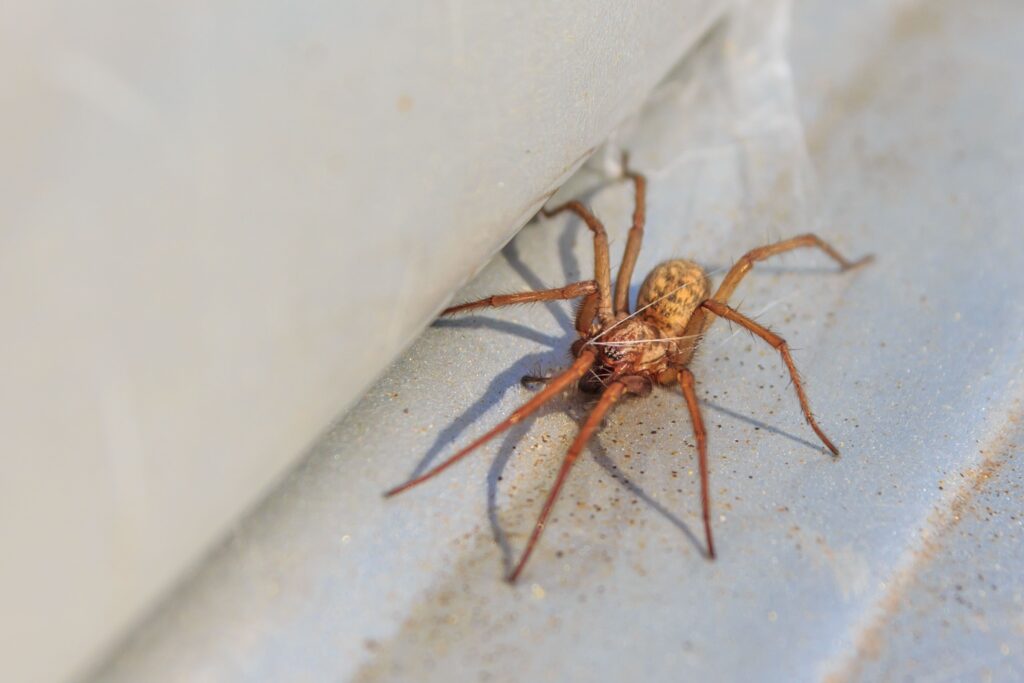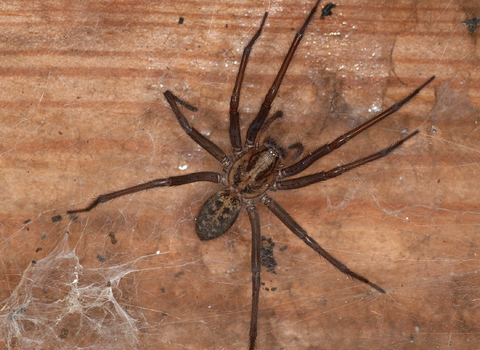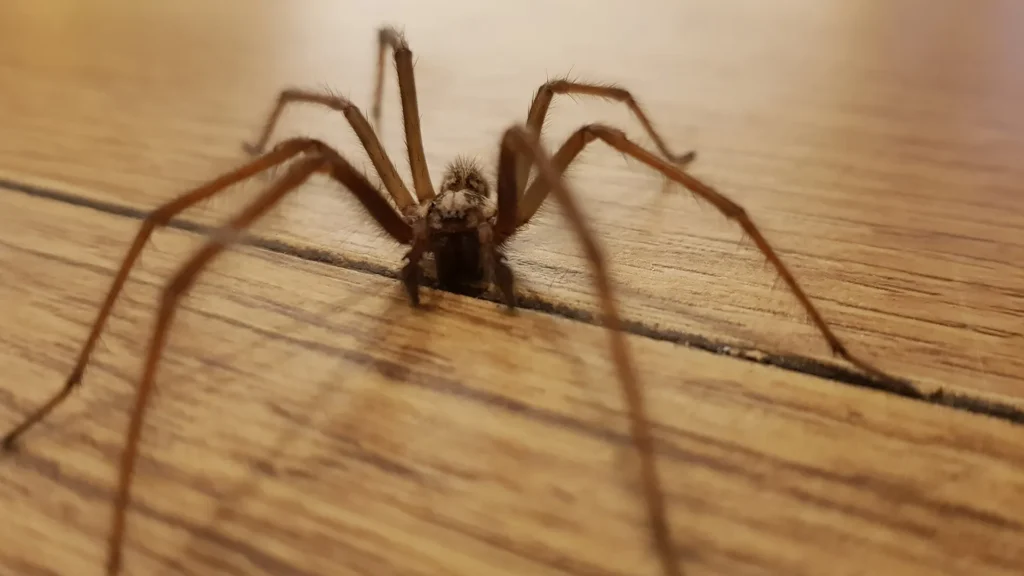Spider Removal Services by Pest Control Xperts in Davis
Serving homes, apartments, dormitories, hotels, and healthcare offices throughout Davis, Dixon, Winters, California, and Surrounding Areas
Professional Spider & Ant Control for Davis, Dixon, & Winters, California
Are you tired of the never-ending battle against spiders and ants in your Davis, Dixon, or Winters home or business? You’ve tried every spray, trap, and home remedy, only to find these persistent pests returning with frustrating regularity. That’s because DIY methods offer merely temporary illusions, undone by the hidden colony. At Davis Pest Control Experts, we understand your frustration, and we’re here to tell you that true, lasting relief is possible. Our professional service eliminates the problem at its source, targeting the queen and the nest, ensuring a comprehensive solution that DIY efforts simply cannot achieve.
Why Spiders & Ants Appear in Davis, Dixon, Winters, and Surrounding Communities
Climate & Geography: Local Factors Driving Pest Behavior
The unique climate and geographical features of Davis, Dixon, and Winters, California, create an ideal environment for various spider and ant species to thrive, making pest control a year-round necessity. Our region experiences hot, dry summers and mild, wet winters, which significantly influence pest behavior. During the scorching summer months, spiders and ants often seek refuge indoors, drawn to cooler, moister environments within homes and businesses. The Sacramento Valley’s fertile agricultural lands, proximity to waterways like Putah Creek, and surrounding natural open spaces provide abundant food sources and nesting sites for these pests. As temperatures drop in the fall and winter, pests again seek warmth and shelter inside structures, leading to increased indoor activity.
Architecture & Urban Factors: How Local Structures Attract Pests
Common architectural styles in our communities also contribute to vulnerabilities. From the older, charming homes in established Davis neighborhoods with their mature landscaping and foundational cracks, to the sprawling ranch-style houses common in Dixon and Winters, and the newer suburban developments across the region, each presents unique entry points. Gaps around windows and doors, unsealed utility penetrations, cracks in foundations, and even unkempt landscaping close to structures offer easy access. Dense commercial districts and older buildings can also provide ample harborage for various pest populations, creating a constant challenge for property owners.
Types of Spiders & Ants Commonly Found in California’s Central Valley
Understanding the specific spider and ant species prevalent in our area is crucial for effective control. Here are some of the most common invaders you might encounter:
Common Spider Species in Our Service Area
- Black Widow Spiders (Latrodectus hesperus): These notorious spiders are common throughout California, including Yolo County. Adult females are shiny black with a distinctive red hourglass marking on the underside of their abdomen. They prefer dark, dry, secluded, and undisturbed areas such as garages, crawl spaces, woodpiles, outdoor sheds, and under furniture. Their venomous bite can cause severe pain, muscle cramps, and illness, especially in children, the elderly, or those with compromised health. Bites often occur when people disturb them while cleaning or reaching into cluttered areas.
- Yellow Sac Spiders (Cheiracanthium mildei): These small, pale yellow spiders have a slightly darker stripe on their abdomen. They are often found indoors, spinning silken sac webs in ceiling corners, behind shelves, and pictures. Outdoors, they inhabit shrubbery. Bites typically happen when the spider is trapped against the skin, causing initial pain similar to a bee sting, redness, and sometimes swelling.
- Wolf Spiders (Lycosidae family): Large, hairy, brown or gray spiders, wolf spiders are fast, solitary hunters that do not spin webs to catch prey. They are often found in basements, under furniture, in laundry piles, and outdoors in leaf litter or logs. While their bites are rare and generally cause only mild pain or swelling, their appearance can be alarming.
- Cellar Spiders (Pholcus phalangioides): Also known as “Daddy Long-Legs,” these spiders have very long, thin legs and tiny gray or tan bodies. They prefer damp, dark environments like cellars and basements, and are known for their tangled, messy webs in room corners and window frames. They are generally harmless to humans.
- Common House Spiders (Parasteatoda tepidariorum): Small, brown or gray spiders with round abdomens, common house spiders spin irregular, messy webs in corners, window frames, and garages. They are typically non-aggressive and considered more of a nuisance.
- Jumping Spiders (Salticidae family): Small, often black with white or iridescent markings, jumping spiders are active daytime hunters with excellent vision. They do not spin webs for hunting but stalk and leap on their prey. They are often found on windowsills, walls, and houseplants. They are generally harmless.
- Orb Weaver Spiders (Family Araneidae): These spiders are known for building large, intricate circular webs, often seen in gardens, around porch lights, and in shrubs. They have bulbous abdomens and are often boldly patterned. Their bites are rare and cause only mild irritation.
Common Ant Species in Our Service Area
- Carpenter Ants: These ants are known for excavating wood to build their nests, which can lead to structural damage in homes and businesses. They are often larger than other ant species and can be black, red, or a combination of both. You might see their distinctive “frass” (sawdust-like material) near damaged wood.
- Pavement Ants: Small, dark brown to black ants, pavement ants are commonly found nesting under sidewalks, driveways, and building foundations. They enter homes in search of food and can be a persistent nuisance, especially in kitchens.
- Odorous House Ants: These small, dark brown or black ants emit a rotten coconut-like odor when crushed. They are highly adaptable and can nest both indoors and outdoors, often found trailing in kitchens and bathrooms, seeking sugary foods.
- Pharaoh Ants: Tiny, yellowish to light brown ants with darker abdomens, Pharaoh ants are notorious indoor pests, especially in heated buildings. They often infest warm, moist areas near drains, pipes, or wiring, and can build nests in wall voids, behind baseboards, and in insulation. Pharaoh ants can carry and transmit various diseases, making their presence particularly problematic in healthcare facilities. They are known for “budding,” where colonies split and spread rapidly if disturbed by improper control methods.
Problems Spiders & Ants Create for Homes and Businesses
Health Risks Associated with Spider & Ant Infestations
An unchecked spider or ant infestation can lead to a multitude of problems, extending beyond mere annoyance:
- Health Concerns: While most spider bites are not medically significant, black widow bites can be serious, causing pain, muscle cramps, and other symptoms. Ant species like Pharaoh ants can transmit various pathogens, posing a health risk, especially in sensitive environments.
- Food Contamination: Ants, particularly species like pavement ants and odorous house ants, can contaminate food sources as they forage in kitchens and pantries. Pharaoh ants are especially problematic as they congregate on unattended food and dishes.
Property Damage & Aesthetic Concerns
- Property Damage: Carpenter ants can cause significant structural damage by tunneling through wooden beams, floors, and walls. Spider webs can accumulate, making properties look unkempt and neglected.
Impact on Daily Life & Business Reputation
- Daily Frustration & Anxiety: The constant presence of spiders and ants, along with the unsightly webs and potential for bites, can create a stressful and uncomfortable living or working environment.
- Reputation Risk: For businesses, a visible pest problem can severely damage your reputation, deter customers, and lead to negative reviews.
Signs of an Escalating Spider or Ant Infestation
Visual Cues of Pest Activity
Early detection is key to effective pest control. Be vigilant for these warning signs that indicate a growing problem:
- Consistent Trails: Regular sightings of ants marching in lines, especially in kitchens, bathrooms, or along baseboards, indicate an established colony.
- Spider Webs: An increase in the number of spider webs, particularly in high-traffic areas, corners, or entry points, suggests a growing spider population.
- Visible Pests: Seeing live spiders or ants frequently, especially during the day, can signal a significant infestation. For bed bugs, look for live or dead bugs, shed skins, or dark fecal spots on bedding or furniture.
- Winged Ants Indoors: The presence of winged ants inside your home or business, especially during warmer months, can indicate a mature colony preparing to establish new nests.
Physical Evidence and Odors
- Frass or Sawdust: Piles of fine sawdust-like material near wooden structures or baseboards are a strong indicator of carpenter ant activity.
- Specific Odors: A musty odor can sometimes indicate a large spider infestation, while odorous house ants release a distinct smell when crushed. For bed bugs, a sweet, musty odor is a key sign.
- Bite Marks: Unexplained bites on your skin, particularly if they appear in lines or clusters, could be a sign of bed bugs or other biting insects.
Why Professional Extermination is Essential for Spider & Ant Removal
The Limitations of DIY Pest Control
Many property owners attempt to tackle spider and ant problems with store-bought sprays, traps, and other DIY solutions. While these methods might offer a fleeting sense of relief, they are often temporary illusions undone by the hidden colony. Here’s why professional extermination is the only true solution:
- Targeting the Source: DIY sprays typically only kill the foraging pests you see, leaving the queen and the vast majority of the colony untouched. This means the problem will inevitably return. Our professional treatments penetrate deep into nesting sites, eliminating the queen and destroying the entire colony at its source.
- Preventing Budding: For certain ant species like Pharaoh ants, improper use of insecticides can actually worsen the problem by causing the colony to “bud” or split into multiple new colonies, spreading the infestation throughout your property. Our experts use strategic baiting and targeted treatments to prevent this phenomenon, ensuring complete colony elimination.
Advantages of Professional Pest Management
- Species-Specific Treatments: Different spider and ant species require different treatment approaches. What works for a black widow will not be effective for a carpenter ant colony, and vice-versa. Our experienced technicians accurately identify the specific pests you’re dealing with and implement tailored strategies for maximum effectiveness.
- Access to Professional-Grade Products & Techniques: We utilize advanced products and techniques not available to the public. These solutions are more potent, longer-lasting, and applied with precision to ensure thorough eradication while prioritizing the safety of your family and pets.
- Long-Term Prevention: Beyond immediate elimination, we focus on long-term prevention. This includes identifying and sealing entry points, recommending environmental modifications, and implementing ongoing monitoring to keep your property pest-free.
Our Spider & Ant Removal Method
Step-by-Step Process for Effective Pest Control
At Davis Pest Control Experts, we follow a meticulous, multi-step process to ensure effective and lasting spider and ant control:
- Comprehensive Consultation & Inspection: Our process begins with a thorough inspection of your property, both indoors and outdoors. We identify the specific pest species, locate nesting sites, assess the extent of the infestation, and pinpoint potential entry points and contributing factors.
- Customized Treatment Plan: Based on our findings, we develop a tailored treatment plan designed to address your unique pest problem. This plan outlines the methods, products, and schedule for treatment, ensuring transparency and effectiveness.
- Targeted Treatment Application: Our skilled technicians apply targeted treatments using the most effective and responsible methods. This may include baiting systems for ants, web removal and direct treatment for spiders, and other advanced techniques to eliminate pests at their source.
- Exclusion & Maintenance Recommendations: We provide expert recommendations for exclusion techniques to prevent future infestations, such as sealing cracks and crevices, repairing screens, and addressing moisture issues. We also offer advice on ongoing maintenance to keep your property protected.
- Monitoring & Follow-Up: Our commitment to your peace of mind extends beyond the initial treatment. We schedule follow-up visits to monitor the effectiveness of our services, make any necessary adjustments, and ensure your property remains free from spiders and ants.
Why Davis, Dixon, & Winters Relies on Davis Pest Control Experts
Local Expertise and Commitment to Excellence
When it comes to protecting your home or business from spiders and ants, Davis Pest Control Experts stands apart. Our deep regional familiarity with the unique pest challenges of Davis, Dixon, and Winters allows us to provide highly effective and localized solutions. We are dedicated to complete colony destruction, not just temporary fixes, ensuring that the queen and the nest are eliminated for lasting relief. Our methods prioritize safe application, minimizing risk to your family, pets, and the environment. We are committed to follow-up and ongoing support, building trust and providing you with the peace of mind you deserve.
Don’t let spiders and ants continue to disrupt your life. The frustration of endless DIY attempts can end today. Davis Pest Control Experts offers the definitive solution for peace of mind, eliminating these pests at their source. Contact us for an immediate consultation.
Service Area Reminder: We proudly serve Davis, Dixon, Winters, and all relevant zip codes in the surrounding areas of California.





